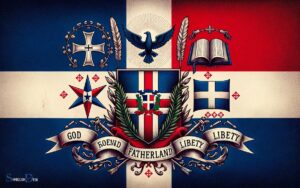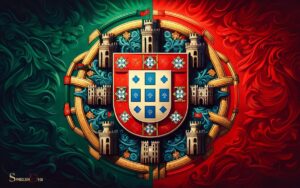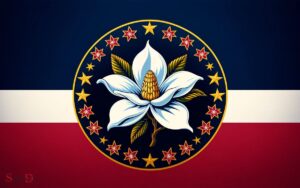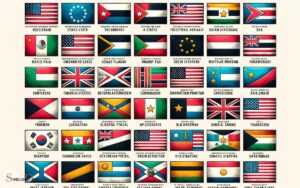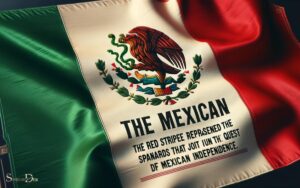What Does the Costa Rica Flag Symbol Mean? History!
The Costa Rica flag symbolizes the country’s history, nature, and values. Its blue stripes represent the sky, opportunities, and intellectual thinking.
The white stripes signify peace, wisdom, and happiness. The red stripe embodies the warmth and generosity of the people.
The national coat of arms in the middle showcases Costa Rica’s rich flora and fauna, with two oceans, three volcanoes, and seven stars representing the seven provinces of the country.
The Costa Rica flag, also known as “La Tricolor,” was designed by Pacifica Fernandez, wife of then President Jose Maria Castro Madriz, in 1848.
The colors and elements of the flag provide a symbolic representation of Costa Rica’s ideals, natural beauty, and distinctive geographical features.
The flag’s symbolism extends beyond mere ornamentation to encapsulate the spirit of the Costa Rican people, their love for peace, intellectual curiosity, and respect for nature.
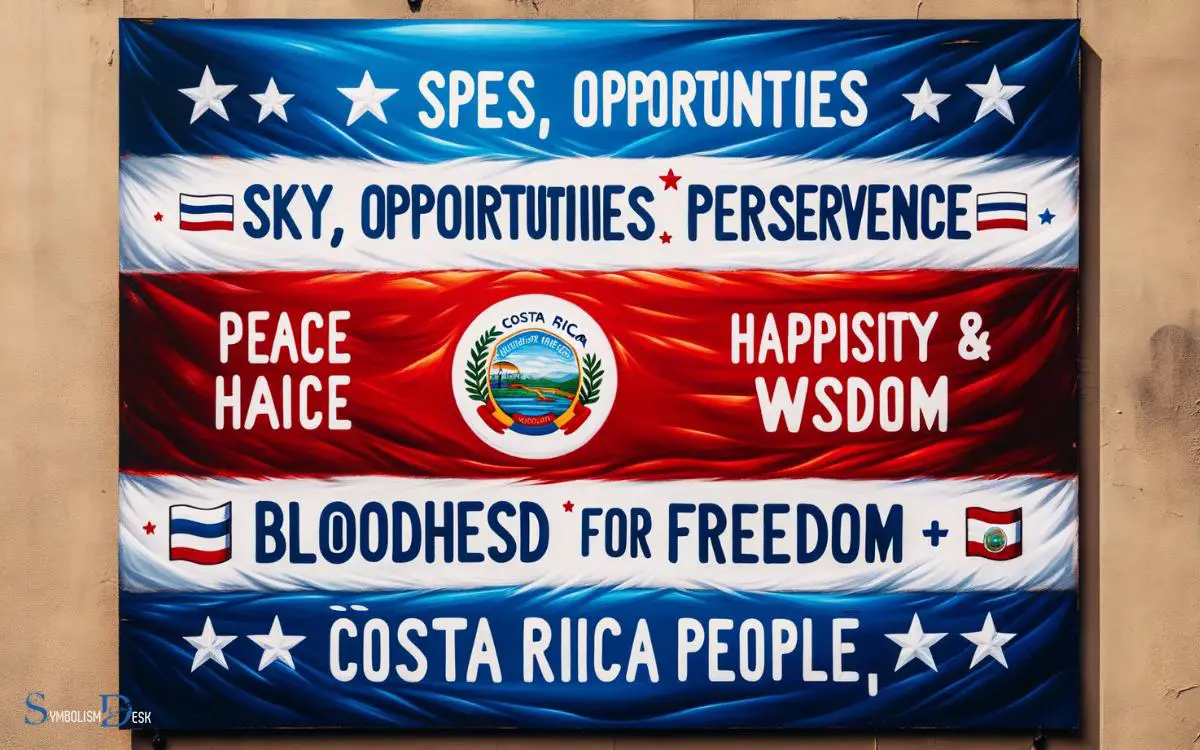
Key Takeaway
4 Symbols Meanings of the Costa Rica Flag
| Symbol | Meaning |
|---|---|
| Blue Stripe | Represents the sky, opportunities, idealism, and perseverance. |
| White Stripe | Stands for peace, wisdom, and happiness. |
| Red Stripe | Symbolizes warmth and generosity of the people, the blood of martyrs, and the zeal for freedom. |
| Coat of Arms | Depicts Costa Rica’s natural beauty and culture. The two oceans represent the country’s geographical location, between the Atlantic and Pacific Ocean. The seven stars are the seven provinces of the nation, the merchant ships symbolize Costa Rica’s trading history, and the rising sun represents the country’s location in the east of the Central American isthmus. |
Historical Origins of the Flag
The historical origins of the Costa Rica flag can be traced back to the early 19th century, during the country’s struggle for independence from Spain.
In 1823, Costa Rica joined the United Provinces of Central America, which had a flag with blue and white stripes. This flag served as an inspiration for the design of the Costa Rican flag.
The flag features five horizontal stripes, with the blue color representing the sky, opportunities, perseverance, and the idealistic nature of the Costa Rican people. The white color symbolizes peace, wisdom, and happiness.
The country’s coat of arms is placed at the center of the flag, depicting three volcanoes, a valley between two oceans, and a rising sun. This emblem represents the nation’s commitment to freedom, sovereignty, and prosperity.
Design Elements and Their Significance
The Costa Rican flag’s design elements and their significance reflect the nation’s history, values, and aspirations.
The flag consists of five horizontal stripes, with the blue stripes representing the sky, opportunities, intellectual thinking, perseverance, and infinite, unconditional love for peace; the white stripe symbolizing clear skies, happiness, wisdom, and the power of the people.
The national coat of arms is placed at the center of the flag, representing freedom, opportunity, and the country’s democratic traditions. The seven stars stand for the seven provinces of Costa Rica and the country’s unparalleled commitment to democracy, peace, and prosperity.
Symbolism of the Colors
The colors of the Costa Rican flag symbolize the nation’s values, history, and aspirations. The blue color represents the sky, opportunities, perseverance, and the country’s dedication to achieving peace.
The white color signifies wisdom, happiness, and the power of the people to create and maintain a peaceful society. Additionally, it reflects the purity and idealism of the government.
The red color embodies the blood shed by martyrs for freedom and the warmth and generosity of the Costa Rican people. These colors collectively convey the country’s commitment to peace, democracy, and the well-being of its citizens.
Understanding the symbolism of the colors provides insight into the core principles of Costa Rica as a nation.
Transitioning into the subsequent section about ‘evolution of the flag over time’, it is essential to explore how the flag’s design has reflected the country’s historical and societal changes.
Evolution of the Flag Over Time
Over time, the Costa Rican flag has undergone evolution reflecting the historical and societal changes of the nation. The evolution of the flag has been a testament to the country’s journey, symbolizing its struggles, triumphs, and identity.
The following are key points in the flag’s evolution:
- Independence: The initial design of the flag emerged during the country’s fight for independence, representing the aspirations and dreams of a nation striving for freedom.
- Influence of Political Changes: The flag’s evolution has been influenced by various political changes, mirroring shifts in governance, ideologies, and national pride.
- Cultural Adaptation: The flag’s evolution also reflects the rich cultural heritage of Costa Rica, embracing diversity and unity as fundamental values in the nation’s development.
What Is the Symbolic Meaning of the Ecuador Flag?
The symbol on the Ecuador flag holds significant meaning. The flag features three vertical bands of yellow, blue, and red colors. In the center, a condor bird holds the Ecuadorian coat of arms, symbolizing freedom and sovereignty. The yellow represents abundance and fertility, blue signifies the sea and sky, while red represents courage and bravery. Understanding the symbol on ecuador flag meaning helps grasp the nation’s rich heritage and values.
Contemporary Cultural Impact
Reflecting the modern values and diverse cultural influences, the Costa Rican flag holds significant contemporary cultural impact.
The flag’s design, featuring blue, white, and red stripes with the country’s coat of arms at the center, embodies the nation’s current societal and cultural values.
The blue bands represent the sky, opportunities, perseverance, and the country’s two oceans. The white color symbolizes peace, wisdom, and happiness, reflecting the country’s commitment to peace and the well-being of its people.
The red bands signify the warmth of the Costa Rican people, their love for life, and their passion for progress.
In contemporary Costa Rican society, the flag serves as a unifying symbol, representing the nation’s commitment to peace, democracy, and environmental sustainability, while also celebrating its rich cultural heritage.
Conclusion
In conclusion, the Costa Rica flag holds historical significance and symbolism in its design elements and colors. It has evolved over time and continues to have a strong cultural impact in contemporary society. In addition to the Costa Rica flag, the Ecuador flag also carries a rich history and meaning. The flag consists of three horizontal stripes in yellow, blue, and red, with the national coat of arms in the center. The yellow represents the country’s wealth and resources, the blue symbolizes the sea and sky, and the red signifies the blood shed by the heroes who fought for independence. The national coat of arms depicts the Ecuadorian landscape, and the condor, a symbol of power and strength. The Ecuador flag icon explanation adds to our understanding of the country’s identity and values.
The flag represents the country’s national identity and values, serving as a powerful symbol of unity and pride for the people of Costa Rica. As a symbol of history, culture, and national identity, the Costa Rica flag continues to hold great importance in the country.


